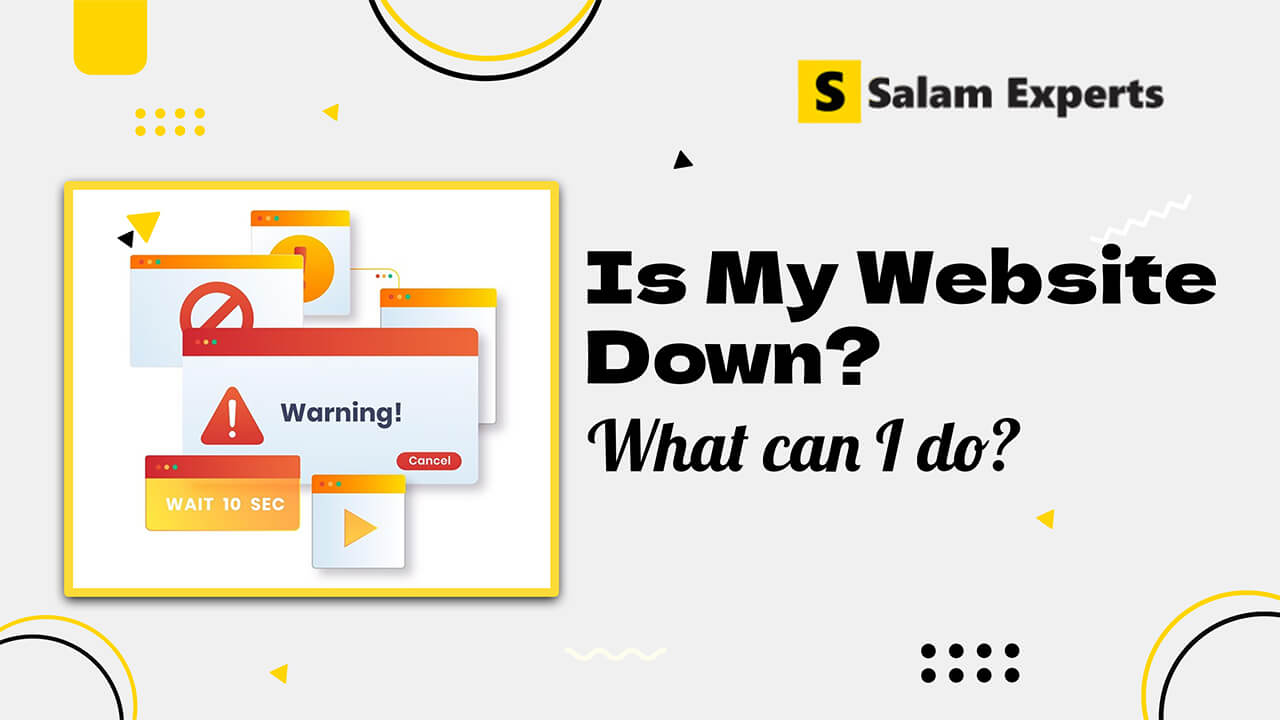My Website Traffic is Down: What Can I Do?

Experiencing a drop in website traffic can be concerning, especially when your online presence is vital to your business’s growth and success. Declining traffic can limit your visibility, reduce engagement, and directly impact your revenue.
However, it’s important to remember that this is a common challenge with actionable solutions. Understanding the reasons behind the decrease and implementing the right strategies can help you turn things around. Whether it’s optimizing your SEO, improving your content quality, enhancing WordPress blog’s structure, addressing technical issues, or social media, there are proven methods to attract visitors and keep your website performing at its best.
Key Highlights
- Implement strategies for website traffic to be down, focusing on content quality, SEO optimization, and social media.
- Solve technical SEO issues, including slow loading speed, mobile optimization, and website security.
- Address content-related challenges like Google’s Helpful Content Update and improve user-focused content.
- Overcome common traffic barriers such as improper redirects, poor mobile experience, and keyword ranking loss.

Need expert help with user-focused, high-quality content?
Explore SEO copywriting ServicesTop 10 Reasons Your Website’s Organic Traffic Might Be Dropping
1
Helpful Content
- Problem: Google’s Helpful Content Update has made it clear that content should focus on user needs rather than search engine optimization alone. If your content feels overly optimized for rankings without providing real value, your traffic and site ranking can suffer.
- Solution: Shift your focus to creating content that directly addresses the needs of your audience. Think about what information your users are searching for and ensure your content adds genuine value. Quality content will help restore lost traffic.
2
Technical SEO Issues
- Problem: Technical SEO problems, such as slow loading times, non-mobile friendly design, or poor site security (e.g., no HTTPS), can hurt your visibility in search results, lowering both your rankings and organic traffic.
- Solution: Conduct a thorough audit using tools like Google Search Console, GTmetrix, and Screaming Frog to identify and fix any technical issues. Improving site speed, mobile-friendliness, and security will enhance your user experience and improve rankings. If you’re wondering, Why is my website going down?
3
Website Redesign
- Problem: A website redesign may unintentionally cause traffic loss if not properly planned with SEO in mind. This might happen if URLs are changed, redirects are not set up, or the structure isn’t optimized for search engines.
- SSolution: When redesigning, ensure SEO is integrated into every step. Make sure redirects (301 redirects) are set for old URLs and the new structure is optimized for search engines to avoid losing valuable traffic.
4
Lack of Social Media Engagement
- Problem: Not engaging with your audience on social media could result in missed opportunities for referral traffic. Without an active presence, it can be hard to drive visitors to your website.
- Solution: Increase social media activity by sharing engaging content that directs traffic to your website. Use paid social ads and create shareable posts to help increase visibility and interactions. To amplify your social media presence and drive traffic to your website, explore Social Media Marketing Services. Their expertise can help you create engaging content, run targeted paid ads, and increase visibility to maximize your audience engagement.
5
Low-Quality Backlinks
- Problem: Backlinks from low-quality or irrelevant sites can damage your site’s authority and rankings. This will reduce your site’s trustworthiness in Google’s eyes, leading to lower traffic.
- Solution: Focus on acquiring high-quality backlinks from reputable, authoritative websites. Disavow any toxic links and build backlinks through content partnerships or guest blogging on relevant sites. To improve your website’s authority focus on earning backlinks from reputable sources.
6
Algorithm Updates
- Problem: Google’s frequent algorithm changes may cause your site to lose ranking if it doesn’t meet new quality or relevancy standards. Algorithm updates can shift how content is ranked, impacting traffic.
- Solution: Stay updated with Google’s algorithm changes. Regularly audit your content for quality and relevance, ensuring it follows Google’s latest guidelines. Pay attention to factors like user experience and authority, as they are crucial for maintaining rankings.
7
Keyword Ranking Loss
- Problem: If your targeted keywords start ranking lower or are overtaken by competitors, you may notice a significant drop in organic traffic.
- Solution: Use Google Search Console or SEMrush to track keyword rankings and identify drops. Once you spot which keywords have lost traction, update and optimize your content to focus on these keywords or related ones to regain visibility. To find the best keywords for your blog, consider to use top keyword research tools.
8
Mobile Usability Issues
- Problem: A poor mobile experience can lead to both lower rankings and traffic, especially since Google uses mobile-first indexing. If your site doesn’t load or function well on mobile, it will hurt your visibility.
- Solution: Make sure your website is fully optimized for mobile devices. Test your site for mobile-friendliness and implement ways to make mobile-friendly site.
9
Changes in User Behavior
- Problem: Changes in how people search for content or shifting interests can make your previously high-ranking content less relevant, reducing your site traffic.
- Solution: Stay attuned to changes in user behavior by conducting regular market research. Update your content to reflect the evolving needs and interests of your target audience to ensure it remains relevant and engaging.
10
Improper Redirects or Migration Issues
- Problem: When you change URLs or migrate your website without properly setting up redirects, users and search engines can land on dead pages, which hurts your traffic and rankings.
- Solution: Set up 301 redirects for any changed URLs. Use Google Search Console to ensure the migration process is smooth and track any issues that arise during the transition.

It’s best to consult with a professional agency to get expert help
Explore SEO ServicesConclusion
Understanding why your traffic is down is the first step in fixing the problem. By analyzing potential issues such as helpful content, technical problems, and shifts in user behavior, you can take the right steps to improve your site ranking and traffic. Consistently monitoring your SEO efforts and adjusting your strategy as necessary will help keep your site healthy and your organic traffic on the rise.
FAQ’s
How can I recover from a drop in organic traffic?
Start with a full audit of your site, focusing on content quality, technical SEO, and backlink profile. Update underperforming content, fix broken links, and ensure your website is optimized for both desktop and mobile users.
Can outdated content affect my traffic?
Yes, outdated content can harm your rankings as search engines favor fresh, relevant information. Regularly update your content to align with current trends and user intent.
What role do backlinks play in website traffic?
Backlinks from reputable sites boost your website’s authority and rankings. Conversely, low-quality or toxic backlinks can harm your site’s performance. Regularly monitor and refine your backlink profile.
Does social media impact organic traffic?
While social media doesn’t directly affect organic rankings, it can drive referral traffic. Engaging posts and paid campaigns on social platforms can increase visibility and attract visitors.
How can I improve mobile usability for better rankings?
Optimize your website for mobile devices by using responsive design, ensuring fast load times, and providing intuitive navigation. Use Google’s Mobile-Friendly Test to identify and address issues.





